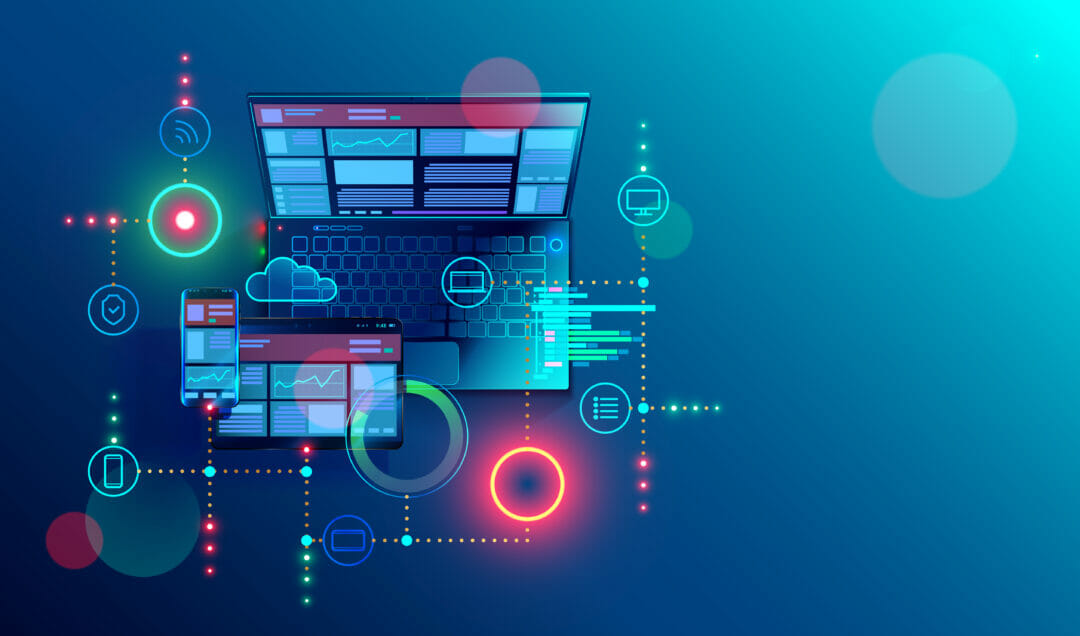Digital devices are evolving rapidly, with numerous new devices coming to market on a regular basis. Research highlights that as of this year, there are 13.8 billion IoT devices connected to the internet. Digital devices are now outpacing humans, which is why device management is more important than ever.
Digital devices are constantly being used in businesses, for different purposes. These devices are usually linked up to corporate networks and locked to ensure these devices are only able to work on approved programmes set by the business. In some organisations, they allow a ‘Bring-Your-Own-Device’ (BYOD) policy, which allows the network to be opened up to employees so they can access the network through personal devices, such as laptops, tablets and mobile phones. With this policy, the network administrator sets certain rules on connected devices so that valuable business data is protected. Efficient device management holds numerous positive outcomes, no matter the devices or industry of the organisation.
How to inspire and empower your remote or hybrid workforce
Why is it important to manage digital devices?
Mobile Device Management (MDM) is a software solution that supports IT teams and administrators by providing them with the ability to monitor corporate devices. This also involves giving access to certain files, maintaining the device and making sure they are secure. It is also able to encrypt company data if someone tries to hack the device, meaning no private data can be accessed. If a device is lost, the device can be locked until it is recovered, or if worst comes to worst and the device is never found, data can be completely wiped. Additionally, devices can be locked if it starts running applications that it shouldn’t be.
MDM is also a key part of Enterprise Mobility Management (EMM), which relates to the overall management of mobile devices and wireless networks, as well as other computing services in organisations. When it comes to MDM, devices are often restricted to an organisation’s EMM.
Without MDM, managing employee devices is more simple when dealing with only a handful of units. Teams can spend time checking each device and updating them when needed. The challenge is when you are having to monitor hundreds of devices with corporate fleets or logistic teams that are equipped with tablets and mobile phones. It becomes impossible to perform physical audits on each device. Through the implementation of MDM, you can centrally manage and support all devices no matter where they are.
From doorbells to nuclear reactors: why focus on IoT security
What are the benefits of MDM?
One of the key benefits of MDM is its ability to support a whole range of digital devices from anywhere the device may be. With the growing popularity of BYOD, it is important that MDM systems are compatible with numerous internet-connected devices and different operating systems. Running an MDM system under a cloud provider helps to improve connection and overall performance while reducing latency.
Ultimately, productivity can be increased significantly. Instead of working on devices physically, this can be done remotely. MDM can do numerous tasks, such as remote provisioning, application distributing and setting business policies, to name just a few.
Not only does MDM software benefit the IT teams, but it also benefits key stakeholders in organisations. By efficiently managing digital devices, optimal performance can be achieved. The software is also able to gather insightful analytics and comprehensive reporting, which is great for key stakeholders to review results and make better-informed decisions.
What do you need to keep in mind?
One thing to be aware of is the arrival of more extensive internet privacy laws, which means software solutions must recognise information quickly and also be able to alert if there are any breaches. Due to this, MDM software must implement new privacy laws such as the European Union’s General Data Protection Regulation (GDPR) or HIPAA regulations.
By adopting an efficient Mobile Device Management (MDM) solution all devices can be managed from a centralised platform that is accessible from anywhere in the world. Not only can it boost productivity but it allows for complete control whilst maintaining the health of the device and optimising security.
So now ask yourself, are you correctly managing your organisation’s devices?











